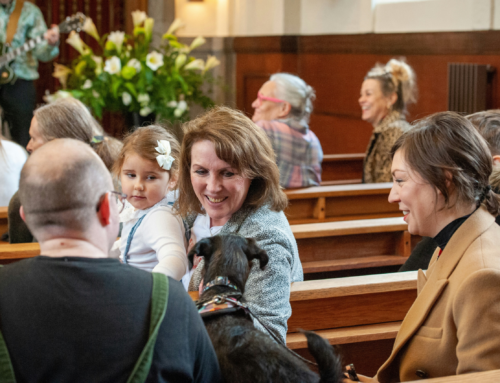 An article in the journal “Intellectual and Developmental Disabilities” (Feb 2013) describes a research project that highlights the importance of religion and spirituality in the lives of persons with disabilities. The authors conducted a survey of 416 families to explore the way in which they and their children participated and were included in congregational life. The study concludes that
An article in the journal “Intellectual and Developmental Disabilities” (Feb 2013) describes a research project that highlights the importance of religion and spirituality in the lives of persons with disabilities. The authors conducted a survey of 416 families to explore the way in which they and their children participated and were included in congregational life. The study concludes that
children and adults with disabilities participate in fewer activities in the faith community, yet, as a population group, value the role and experience of religious and spiritual life more highly then the general population.
Parents reported “not being satisfied with the level of supports provided by faith communities”, and they “highly valued a welcoming and supportive attitude by the community.”
It is critically important that faith communities pay attention to this research. The opportunity for faith communities to come along families and persons with disabilities is significant. It part of the Luke 4 mandate: Jesus’ call to go into the hi-ways and bi-ways to urge everyone to ‘come in’. In Ontario there are approximately 17,000 persons with cognitive disabilities receiving services and over 19,000 still on wait-lists. It is safe to say a number of these families are in our congregations and more could attend with adequate supports in place.
A recent study conducted by Queen’s University, “Supporting Evidence-Based Human Resources Practices in Developmental Services:School of Policy Studies“, indicates that church members and ministers are perceived as “absent” or “unhelpful” in perceived sources of supports.
Opportunities abound at our doorsteps, in our communities, and even in our very pews.
We must work together to address this gap in religious and spiritual life.
Dr. Neil Cudney
Source: AAIDD Journal of Policy Practice, and Perceptives Vol. 51 No.1 February 2013Article: Congregational Participation and Supports for Children and Adults with Disabilities: Parents Perception. Researchers Melinda Jones, Belva C. Collins and Erik W. Carter pg 48. Click here to find out more about obtaining the article.


